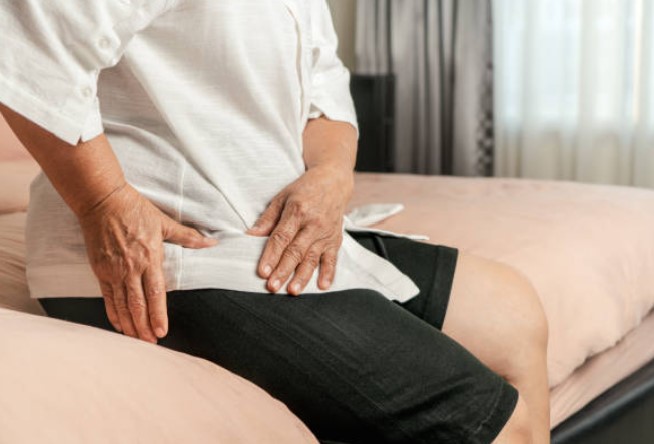Do you have pain on the side of your hips? Does it occasionally travel down the leg? Is it difficult to cross your leg when you sit? You could have a case of gluteal tendinopathy! This pain in the butt is also known as trochanteric bursitis and greater trochanter pain syndrome. Gluteal tendinopathy is an injured tendon caused by overloading the tendon in a short period of time. This tendon can also be irritated by a traumatic incident e.g. slip or fall directly onto the hip. It is especially common in the over 50-year-old female population but it can affect any population group.
Signs and Symptoms:
- Localised pain on the hip bone
- Referral pain down the leg
- Pain lying on the affected hip
- Pain climbing stairs
- Pain standing on one leg
How to manage my tendinopathy symptoms?
The first step to managing gluteal tendinopathy is to recognise the activities that irritate the tendon. It is often lying on the side that compresses the tendon and can elicit symptoms. The crossed leg seated position places the tendon on stretch which can also further irritate the tendon. New mothers carrying their child often report symptoms of gluteal tendinopathy because they are leaning on one side holding their baby near their hips. The ability to limit this aggravating position is important to allow the tendon to settle so you can commence your rehabilitation exercises. If you are unsure about which specific activities will aggravate your gluteal tendinopathy then a physiotherapist can help you identify the cause of your issues.
Who do I see for my gluteal tendinopathy?
Physiotherapy is an evidence based and effective treatment option to fix gluteal tendinopathy. It involves providing specific rehabilitation exercises to strengthen the tendon. A physiotherapist will use soft tissue techniques to help reduce muscular tension and settle down the symptoms. The health of the tendon depends on the amount and frequency of the force applied to it. Overusing the tendon will lead to an irritation. Underutilizing it will lead to weakness. It is about finding the optimal load to induce beneficial adaptive changes to the tendon. A physiotherapist will be able prescribe you with the proper exercise program.
How long does it take to recover?
Tendon issues can take approximately 12 weeks to completely resolve. However, most people feel better with physiotherapy treatment around the 6 weeks. Pain is the last symptom to arrive and the first to go. While it is great that your pain can subside with a few sessions of physiotherapy. It is important to complete the whole rehabilitation program to ensure that the tendon is strong to facilitate your activities. People often become lazy with their rehabilitation program when their pain is resolved. However, the tendon requires further conditioning to prevent reoccurrence and maintain the quality of the tissue.
At MyPhysio, our physiotherapists are experts at assessing and treating gluteal tendinopathy. If you are experiencing hip or glute pain, book an appointment with one of our friendly physiotherapists today. We will be able to help fix your hip issues and get you back to doing the activities you enjoy in your day. Follow us on Facebook and Instagram for more physiotherapy tips on how to optimise your performance.

